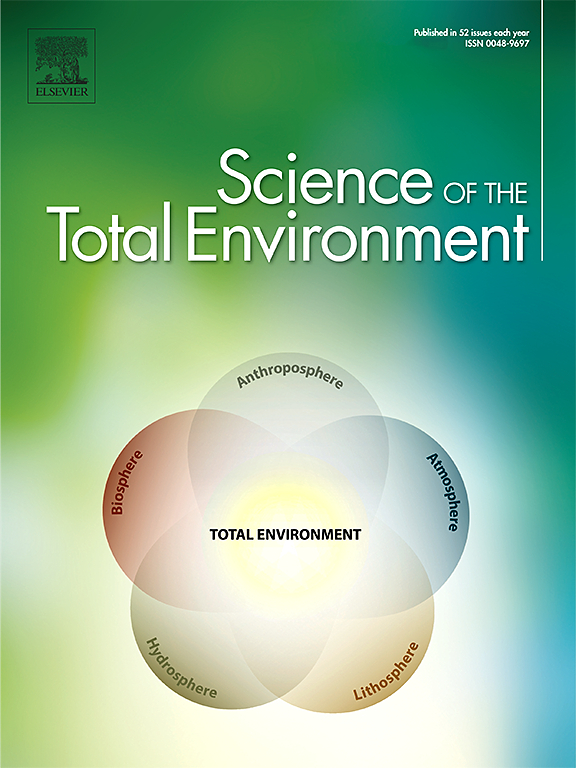Toxicological assays and metabolomic profiling to evaluate the effects of virgin and aged micro- and nano- polystyrene plastics in SH-SY5Y human neuroblastoma cells
IF 8.2
1区 环境科学与生态学
Q1 ENVIRONMENTAL SCIENCES
引用次数: 0
Abstract
In the contemporary era, named plasticene, the extensive presence of micro- and nanoplastics (MPs/NPs) in all environmental matrices constitutes a global challenge that impacts on living beings, including humans. Regardless of the route of exposure, the internalized MPs/NPs may reach the central nervous system and cause cytotoxicity. The effects of nano- and micro- polystyrene particles (n/mPS; 100 μg/mL), both in virgin (v) and home oxidized (ox) form, were assessed on the human neuroblastoma cells SH-SY5Y, treated for 24 h, using toxicological endpoints and 1H NMR-based metabolomics. A pro-oxidant effect was shown by reactive oxygen species (ROS) overproduction, present in virgin and oxidized particles, albeit 27.6 % and 29.5 % higher in ox-nPS and ox-mPS. DNA damage, mitochondrial impairment, and lipid peroxidation were found to be directly related to particle size and oxidation state (v-nPS < ox-nPS < v-mPS < ox-mPS). The metabolic changes induced by v- and ox- n/mPS in neuroblastoma cells involved the amino acid and energy metabolism, osmoregulation, oxidative stress, and neurotransmission. Interestingly, it was highlighted the ability of SH-SY5Y cells exposed to ox-nPS to counteract more effectively oxidative damage by reshaping metabolic pathways. Overall, the combination of toxicological assays and metabolic profiling confirmed the harmful effects induced by n/mPS to SH-SY5Y cells, always enhanced by the in home-oxidized counterpart, that led to cytotoxic effects and changes in cell metabolism. Despite a variable capacity for cellular homeostasis, the results shed light on the potential risks that these ubiquitous xenobiotics pose to human health, acting also as “triggers” for neurodegenerative diseases.

求助全文
约1分钟内获得全文
求助全文
来源期刊

Science of the Total Environment
环境科学-环境科学
CiteScore
17.60
自引率
10.20%
发文量
8726
审稿时长
2.4 months
期刊介绍:
The Science of the Total Environment is an international journal dedicated to scientific research on the environment and its interaction with humanity. It covers a wide range of disciplines and seeks to publish innovative, hypothesis-driven, and impactful research that explores the entire environment, including the atmosphere, lithosphere, hydrosphere, biosphere, and anthroposphere.
The journal's updated Aims & Scope emphasizes the importance of interdisciplinary environmental research with broad impact. Priority is given to studies that advance fundamental understanding and explore the interconnectedness of multiple environmental spheres. Field studies are preferred, while laboratory experiments must demonstrate significant methodological advancements or mechanistic insights with direct relevance to the environment.
 求助内容:
求助内容: 应助结果提醒方式:
应助结果提醒方式:


